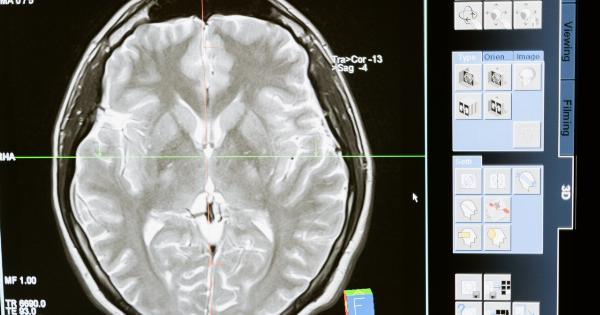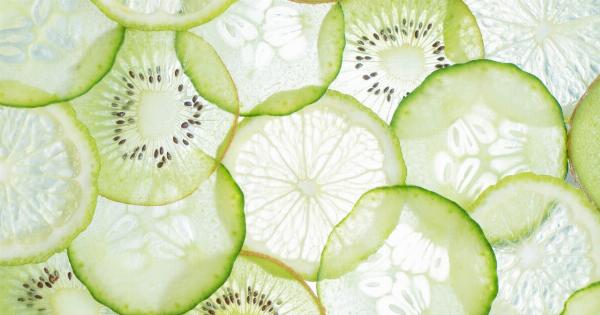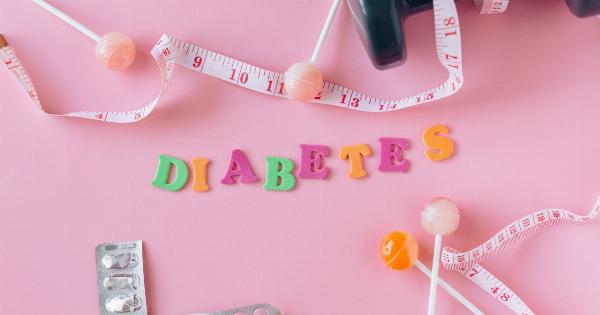Fiber is an essential component of a balanced diet and plays a crucial role in maintaining good digestion and overall health. In simple terms, fiber refers to the carbohydrates found in plant foods that cannot be digested by the body.
It remains undigested as it passes through our digestive system, providing numerous benefits along the way.
The Two Types of Fiber
Fiber can be categorized into two main types: soluble fiber and insoluble fiber. Soluble fiber dissolves in water and forms a gel-like substance in the digestive tract, while insoluble fiber does not dissolve in water and adds bulk to the stool.
Both types are essential for our well-being and should be included in our daily diet.
Benefits of Fiber
Consuming an adequate amount of fiber offers several health benefits:.
1. Promotes Healthy Digestion
Fiber adds bulk to the stool, making it easier to pass through the intestines, thus preventing constipation. It also promotes regular bowel movements, reducing the risk of gastrointestinal diseases such as hemorrhoids and diverticulitis.
2. Helps Maintain a Healthy Weight
Fiber-rich foods are generally more filling and help curb hunger cravings. They require more chewing and take longer to digest.
Including fiber in your meals can help you feel satisfied for longer periods, reducing excessive snacking and aiding in weight management.
3. Manages Blood Sugar Levels
By slowing down the absorption of sugar into the bloodstream, fiber helps regulate blood sugar levels. This is particularly beneficial for individuals with diabetes or those at risk of developing the condition.
4. Reduces the Risk of Heart Disease
A high-fiber diet can lower cholesterol levels, specifically LDL cholesterol (the “bad” cholesterol), thus reducing the risk of heart disease and stroke.
Fiber also helps maintain healthy blood pressure levels, further improving heart health.
5. Promotes Healthy Skin
Fiber assists in removing toxins and waste from the body. By eliminating harmful substances efficiently, it contributes to healthier skin and a clear complexion.
Fiber-Rich Foods to Include in Your Diet
To increase your daily fiber intake, it’s important to incorporate a variety of fiber-rich foods into your diet. Here are some great sources of fiber:.
1. Whole Grains
Opt for whole grains such as brown rice, quinoa, whole wheat bread, and oats instead of refined grains. These provide more fiber, vitamins, minerals, and antioxidants.
2. Fruits and Vegetables
Fruits like berries, apples, pears, and vegetables such as broccoli, carrots, and Brussels sprouts are rich in fiber. Aim to consume them with their skins whenever possible, as the skin contains a significant amount of fiber.
3. Legumes
Include beans, lentils, chickpeas, and other legumes in your diet. They are excellent sources of fiber, protein, and various other nutrients.
4. Nuts and Seeds
Almonds, chia seeds, flaxseeds, and sunflower seeds are all healthy snacks that provide a good amount of fiber. Incorporating them into your diet can be a great way to increase your fiber intake.
5. Fiber Supplements
If it’s challenging to meet the daily recommended fiber intake through food alone, fiber supplements, such as psyllium husk or wheat bran, can be taken with plenty of water.
However, it’s always best to obtain fiber from natural food sources whenever possible.
Tips for Increasing Your Fiber Intake
Here are some useful tips to help you increase your fiber intake:.
1. Gradually Increase Fiber Intake
It’s important to gradually increase your fiber intake and give your body time to adjust. Sudden, dramatic changes in fiber intake can lead to digestive discomfort.
2. Drink Plenty of Water
Fiber works best when consumed with an adequate intake of water. Be sure to drink plenty of water throughout the day to help fiber move through your digestive system smoothly.
3. Choose Whole Foods
Opt for whole foods instead of processed ones. Whole fruits, vegetables, and grains provide higher amounts of fiber and other essential nutrients.
4. Include Fiber at Each Meal
Aim to include fiber-rich foods at each meal. For example, add berries or sliced fruit to your breakfast cereal, include a side of steamed vegetables with lunch, and choose whole grains as the base for your dinner.
5. Snack on Fiber-Rich Foods
Instead of reaching for unhealthy snacks, choose fiber-rich options. Snack on raw vegetables with hummus, a handful of nuts, or a piece of fruit.
Conclusion
Fiber is an essential component of a healthy diet and provides numerous benefits for our overall well-being.
By including fiber-rich foods in our daily meals, we can improve our digestion, maintain a healthy weight, regulate blood sugar levels, reduce the risk of heart disease, and promote healthy skin. Gradually increase your fiber intake, drink plenty of water, and choose whole, unprocessed foods to maximize the advantages of a high-fiber diet.




























